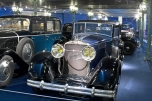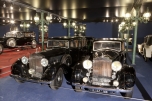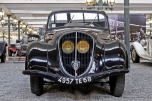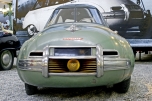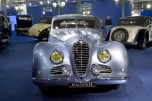Cars from 1920 to 1950 - The golden age of the car
Renault Type 40 CV
1924
Code 2212
Body style: landaulet
Renault always had a reputation as a general-purpose manufacturer, which made it difficult to attract the luxury end of the market, perhaps through sheer snobbery. In 1908 Louis Renault added a new model with a luxury chassis, large and powerful engine of 35 and later 40 horsepower to the range from 1908. This landaulet is nearly 5 metres long and weighs in at close to 2 tonnes. It is built on a Renault chassis that was produced for twenty years from 1908, the NM 40 CV. The Type NN was a top-of-the-range vehicle from the 1920s, a worthy contemporary of the Rolls Royce Silver Ghost and Hispano Suiza H6. Its large 9-litre engine was versatile and quiet, and propelled it to speeds of 110 kph (70 mph). Its stretched-out chassis was well-suited to the work of famous coachbuilders such as Labourdette or Kellner, who built wonderful coupé or landaulet bodies. This landaulet boasts particularly refined finishing.
In 1926, a purpose-built NM chassis with ultra-light bodywork and a 200 hp engine set the world record for the 24 Hours of Le Mans with an average speed of 174 kph (108 mph).
This eye-catching automobile was for many years the official vehicle of French Presidents. From the earliest days of motoring onwards, heads of state that had a homegrown automotive industry always had a fleet of vehicles to reflect the quality of their domestic manufacturing. Some of these cars became famous for good or for ill – tragic examples include the Gräf und Stift of Archduke Franz Ferdinand from the Sarajevo shooting or the Lincoln Continental that JFK was riding in Dallas. Other well-known cars were the Hispanos driven by Alphonse XIII, King of Spain, the presidential Renaults from the 1930s, General de Gaulle’s Citroën DS, the Rolls Royces driven by the British Royal Family or the heavy-set Zils driven by Kremlin officials.









